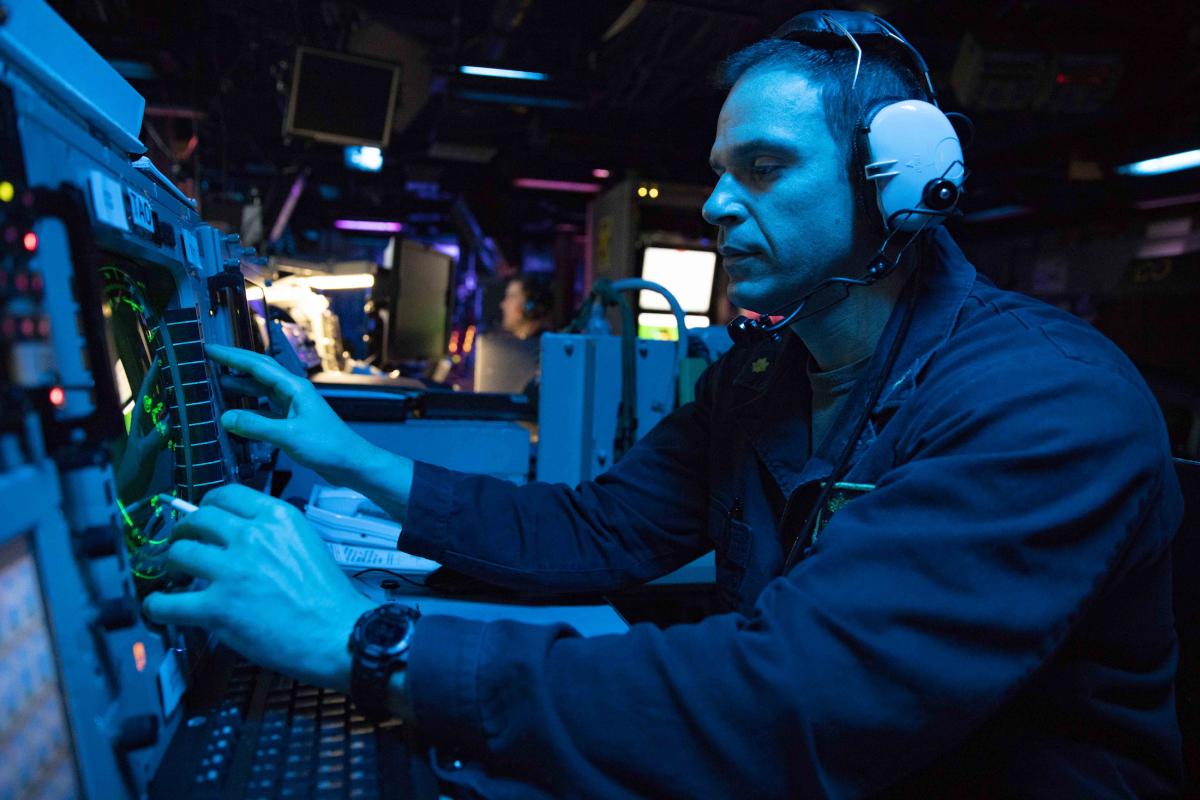Don’t text and drive has been ingrained in our collective consciousness. Distracted driving is the number one cause of accidents in the United States, and the number one distraction causing those accidents is drivers texting on their mobile phones. On warships at sea, watchstanders face a similar problem—they all have the ability to, and are even required to, communicate through message chat rooms on computers at their watch stations.
Communication has always been paramount to fight in multiship formations. Flashing light and semaphore have been around for centuries and required knowledgeable personnel to perform the communication duties. Radio communication began in the 20th century and enabled watchstanders to communicate while simultaneously firing weapons or driving the ship. Digital message chat emerged in the late 20th century and has resulted in watchstanders chatting while simultaneously performing their primary tasks. While the Navy enthusiastically embraced the assumption that greater information flow and sharing is better for awareness and watchstanding, chat rooms at watch stations have a negative impact on watchstander reaction time and situational awareness. As the Tactical Training Group Atlantic (TTGL) director of operations and training for two years now, I have mentored and evaluated many ships and watchstanders. Despite the ubiquity of information today and the sophisticated information technology systems afloat, staff tactical watchstanders remain severely challenged in maintaining an accurate picture on tactical displays.
Most watch stations now have chat rooms that watchstanders are required to monitor along with their console display. Young watchstanders are very comfortable monitoring chat rooms, but less comfortable monitoring radar. This is like being more comfortable texting than looking out a car’s windshield while driving. They are even less comfortable talking on the radio, though doing so would better allow them to communicate while simultaneously monitoring their tactical displays. Communicating through text as opposed to verbally reflects the pervasive presence of digital media in today’s society. Furthermore, this trend away from verbal communication and the decline in professional, competent radio procedures has been exacerbated by the elimination of the Radio Users Telephone Handbook to train watchstanders.
In addition to chat rooms being highly distracting, they also are designated as different communications circuits, when in fact they are all one communication path. This lack of redundancy degrades the Navy’s ability to fight when the single digital information path is disabled. If the enemy can take down the one frequency used for all chat, an entire carrier strike group, for example, will be without communications on all primary circuits.
The most common explanation my colleagues can offer is that younger people prefer to chat because it is similar to the texting or social media they have grown up with. To counter this line of reasoning, I explain that at TTGL we should compare shipboard watchstanding to playing a video game, in that if you ask any young gamer (which many young sailors are) if they would like to chat while playing an online game they would ask if you are crazy. They multitask by communicating via headsets, allowing the best use of all their senses to defeat the enemy in the game.
As long as the Navy allows—or requires—the use of chat at watch stations, watchstanders will continue to neglect the primary duty of ensuring the tactical picture be maintained as accurately as possible. All higher headquarters rely on the tactical picture generated and maintained by the strike group. The Navy should prohibit the use of chat at primary watch stations or require all chat communication paths have separate, dedicated watchstanders to send the chat as they hear the communication made by the primary watchstander. An even better method that could take advantage of artificial intelligence would be to have a computer translate all radio communications into chat messages and sent simultaneously. Either way, primary watch standers must be freed from the distraction of chat to fight the ship. A final recommendation would be to reissue the Radiotelephone Users Handbook to train watchstanders on the proper use of radiotelephone circuits. An updated version is Coast Guard Tactics, Techniques, and Procedures, 6-01.1A, Radiotelephone Handbook dated 16 January 2013.
When the fight starts and missiles are flying, watchstanders may only have seconds to react and save the ship. My great hope is that if that happens the watchstander will be looking at the tactical display and not the chat window.



